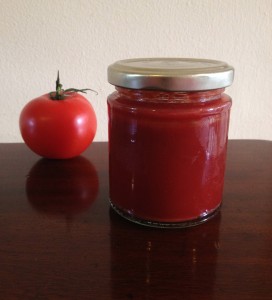 The word ‘ketchup’ comes from the old Indonesian ‘Ketjap’ which is a fermented sauce. This tasty condiment is a favourite with kids of all ages.
The word ‘ketchup’ comes from the old Indonesian ‘Ketjap’ which is a fermented sauce. This tasty condiment is a favourite with kids of all ages.
Ingredients
3 cups of tomato puree (preferably organic)
1/4 cup of whey
10g of sea salt
1/2 cup maple syrup
1/4 tsp cayenne pepper
3 cloves garlic, crushed
1/2 cup of fish sauce (make your own or buy a commercial variety)
Method
Mix all ingredients until well blended.
Place in a wide mouthed jar. The top of the ketchup should be at least 2cm below the top of the jar.
Seal the jar and leave out at room temperature for 5 days before transferring to cold storage. Undo the lid slightly each day that the jar is at room temperature to release any CO2.
*
Click here for more information on making successful ferments.
This recipe comes from Nourishing Traditions by Sally Fallon, co-founder of the Weston Price Foundation.

Hi Katie
What a lovely blog site Well done. Where are you getting all those lovely pictures from!
Vera
Thanks Vera, a lot of the pictures are my own. The ones that are not I have used under Creative Commons distribution, these images have links back to their original sources.
Hi Katie, this looks great and I really want to try it! Quick question though: how long does it last in the fridge?
Hi Katherine
Let me know how it goes!
The idea is that the liquid environment and the lactic acid in the product will be able to preserve it for quite some time. One of the traditional reasons for fermenting was for longevity of food items, before refrigeration. I have a blog post that explains this in more detail ‘Practical Basics and Tips for Fermenting’ – see below.
You should be able to tell by the change in taste or/and smell if it is starting to pass its peak. What may happen is that mould could form on the surface of the ketchup, like in a jam jar, as this is the part of the product that is not submerged in liquid and which is in contact with oxygen. Sandor Katz (The art of fermentation) says that it is completely fine to scoop this mould out, along with the neighbouring product around it; The rest of the ferment will be unharmed.
Another tip is that once your jar is only half full, transfer the contents to a smaller jar. This is to reduce the amount of air/oxygen in the jar and to preserve it for longer.
http://katieclare.co.uk/2012/09/practical-basics-and-tips-for-fermenting/